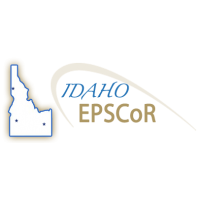Whole genome resequencing identifies local adaptation associated with environmental variation for redband trout
Abstract
Aquatic ectotherms are predicted to harbour genomic signals of local adaptation resulting from selective pressures driven by the strong influence of climate conditions on body temperature. We investigated local adaptation in redband trout (Oncorhynchus mykiss gairdneri) using genome scans for 547 samples from 11 populations across a wide range of habitats and thermal gradients in the interior Columbia River. We estimated allele frequencies for millions of single nucleotide polymorphism loci (SNPs) across populations using low-coverage whole genome resequencing, and used population structure outlier analyses to identify genomic regions under divergent selection between populations. Twelve genomic regions showed signatures of local adaptation, including two regions associated with genes known to influence migration and developmental timing in salmonids (GREB1L, ROCK1, SIX6). Genotype–environment association analyses indicated that diurnal temperature variation was a strong driver of local adaptation, with signatures of selection driven primarily by divergence of two populations in the northern extreme of the subspecies range. We also found evidence for adaptive differences between high-elevation desert vs. montane habitats at a smaller geographical scale. Finally, we estimated vulnerability of redband trout to future climate change using ecological niche modelling and genetic offset analyses under two climate change scenarios. These analyses predicted substantial habitat loss and strong genetic shifts necessary for adaptation to future habitats, with the greatest vulnerability predicted for high-elevation desert populations. Our results provide new insight into the complexity of local adaptation in salmonids, and important predictions regarding future responses of redband trout to climate change.
Data Use
License
Creative Commons Public Domain Dedication and Certification (CC-PDDC)
Recommended Citation
Andrews K. 2022. Redband trout whole genome resequencing [Dataset]. National Center for Biotechnology Information. https://www.ncbi.nlm.nih.gov/bioproject/PRJNA900579
Funding
US National Science Foundation and Idaho EPSCoR: OIA-1757324
National Institute of General Medical Sciences: P30 GM103324
| Field | Value |
|---|---|
| Modified | 2023-09-06 |
| Release Date | 2023-03-23 |
| Publisher | |
| Identifier | aed6ee30-32f0-4feb-8f7d-97311cedb0cf |
| Spatial / Geographical Coverage Area | POINT (-116.1047 42.72889) POINT (-116.0425 42.56278) POINT (-116.027727 42.547927) POINT (-116.92919 42.87577) POINT (-116.88526 44.55295) POINT (-116.885284 44.55282) POINT (-115.28529 43.94013) POINT (-116.33898 44.51247) POINT (-116.174085 43.68899) POINT (-116.13527 43.71776) POINT (-116.05894 44.382336) POINT (-116.387638 48.569121) POINT (-116.030808 48.420298) POINT (-114.1464 43.33886) POINT (-116.934 44.52606) POINT (-116.987 44.5477) |
| Spatial / Geographical Coverage Location | Idaho (USA) |
| Temporal Coverage | Thursday, January 1, 1998 - 00:00 to Saturday, March 19, 2022 - 00:00 |
| Language | English (United States) |
| License | Creative Commons Public Domain Dedication and Certification |
| Author | |
| Contact Name | Kimberly Andrews |
| Contact Email | |
| Public Access Level | Public |

